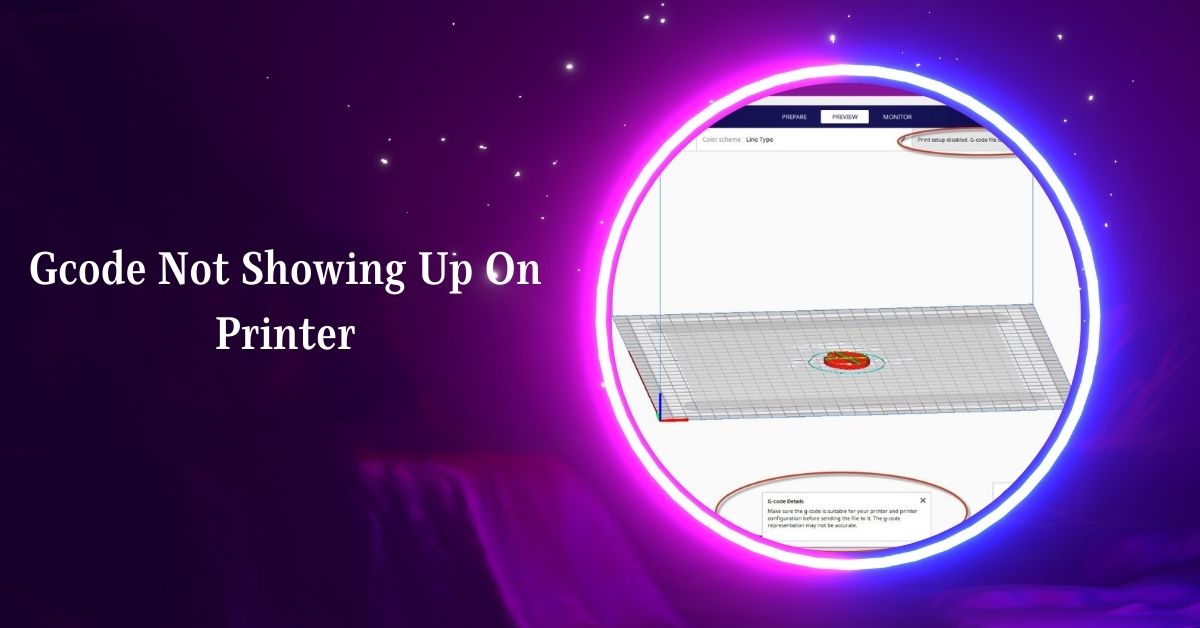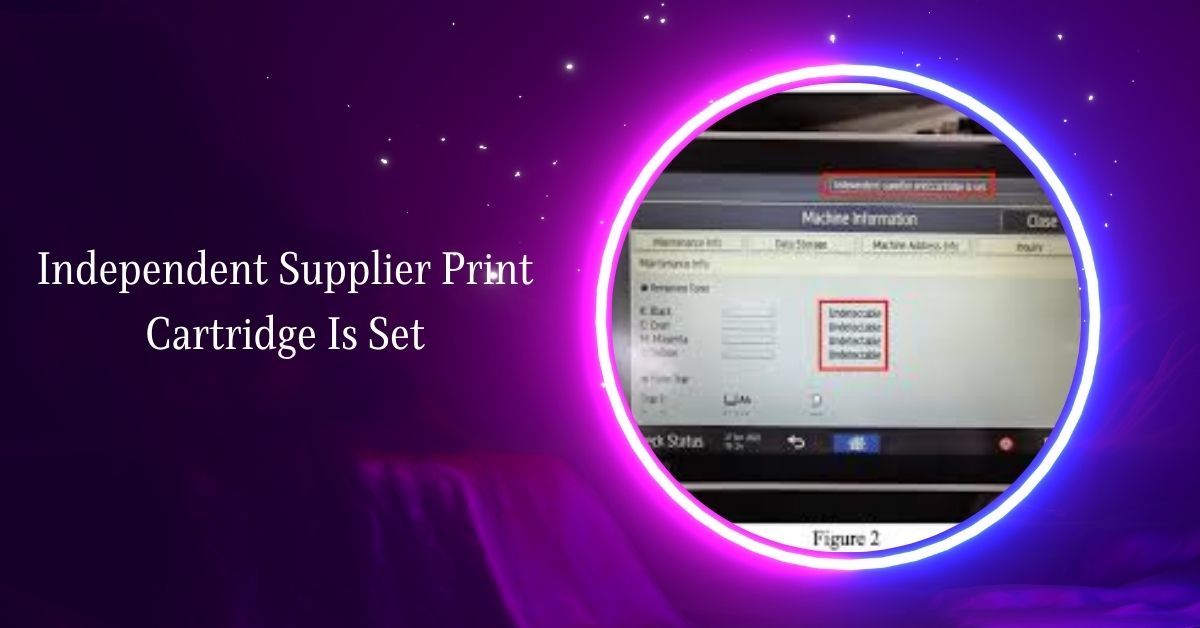In 3D printing, encountering issues with Gcode not displaying on your printer can be frustrating.
If your G-code isn’t showing up on the printer, ensure the file is correctly named and adequately formatted. Check your printer’s settings and connections, and make sure the G-code file is compatible with your printer model.
Here’s an in-depth look at the reasons behind this issue and possible solutions to get your 3D printer back on track.
What is Gcode?
Gcode, or “Geometric Code,” is the language used by 3D printers to interpret 3D models. It provides detailed instructions on printer movements, temperature settings, and extrusion amounts, enabling the printer to build objects layer by layer.
Common Reasons for Gcode Not Showing Up
1. File Format Issues
One common reason for Gcode not appearing on your printer is a file format mismatch. Your printer requires files in a specific format, typically ending in .gcode. If the file extension is incorrect or if the file is corrupted, the printer will not recognize it. Make sure to:
- Confirm the file extension is .gcode.
- Avoid using special characters in file names, as some printers cannot process them.
2. SD Card Problems
SD card issues are a frequent cause of Gcode visibility problems. Over time, repeated use can corrupt or damage SD cards. Common issues include:
- The card becomes read-only or unreadable.
- Corruption from improper removal (not using the unmount command).
Solution: Reformat the SD card and ensure it’s in good condition. Backup any important files before reformatting, as this process will erase all data on the card.
3. Firmware Compatibility

The firmware on your 3D printer might not support the latest Gcode standards or have bugs that cause it to misread files. This is particularly common with older printers or those that have not had firmware updates in a while.
Solution: Check for and install any available firmware updates for your printer. Manufacturers often release updates to address such issues.
4. Slicing Software Settings
Sometimes, the issue lies with the slicing software that generates the Gcode. Incorrect settings or software bugs can result in files the printer cannot read.
Solution: Use up-to-date slicing software like Cura, PrusaSlicer, or Simplify3D. Check the settings and try generating the Gcode again.
Steps to Resolve Gcode Display Issues
1. Check File Format and Naming Conventions:
- Ensure the Gcode file has the correct extension and does not contain special characters.
- Rename the file if necessary (e.g., change “complex&part.gcode” to “part1.gcode”).
2. Inspect and Format the SD Card:
- Use a reliable SD card, ideally less than 32GB, as some printers need help with larger cards.
- Format the SD card to FAT32 and re-transfer the Gcode files.
3. Update Firmware:
- Visit the printer manufacturer’s website to download the latest firmware.
- Follow the instructions to update your printer’s firmware, ensuring better compatibility and bug fixes.
4. Re-slice the Model:
- Open your slicing software and re-import your 3D model.
- Carefully check the slicing settings and generate the Gcode again.
- Transfer the new Gcode file to the SD card and attempt to print.
5. Test with Different Files:
- If a particular Gcode file isn’t showing, try using another previously worked file.
- This can help determine if the issue is with the file itself or the printer’s ability to read the card.
Additional Tips and Tricks
- Use High-Quality SD Cards: Cheap or fake SD cards often have hidden issues. Use well-known brands and purchase from reputable sources.
- Backup Regularly: Keep backups of your essential Gcode files and SD card contents on your computer.
- Avoid Frequent Removals: Minimize the wear and tear on the SD card slot by avoiding frequent insertions and removals. Use a USB connection if available.
Files not showing up on 3D printer

Files may not show up due to incorrect file formats, SD card issues, or firmware incompatibility. Ensure your files are in .gcode format, the SD card is properly formatted, and the printer firmware is up-to-date.
3D printer not reading files on SD card
Common issues include corrupted SD cards, improper formatting, or file naming conventions. Format the SD card to FAT32, avoid special characters in file names, and check for firmware updates to ensure compatibility.
How to put gcode on SD card
First, slice your 3D model using slicing software to generate a .gcode file. Save this file to an SD card formatted to FAT32. Insert the SD card into your 3D printer and select the file to begin printing.
Gcode file Could not save as Creality format
If your Gcode file isn’t saving in the Creality format, ensure the slicing software settings are correct. Update the slicing software and ensure the file name adheres to the required conventions, avoiding special characters.
Files not showing up on Ender 3 V2
Ensure the Gcode file is correctly named and the SD card is formatted to FAT32. Verify that the file extension is .gcode and check the Ender 3 V2 firmware for any required updates to handle the files.
Printer no longer reading Cura generated gcode
If your printer isn’t reading Cura-generated Gcode, reformat the SD card and ensure it’s in good condition. Double-check the slicing settings in Cura and update the software and printer firmware if necessary.
Problem with 3D printer not accepting new print gcodes
Issues can stem from file format errors, SD card problems, or firmware issues. Ensure the file is in .gcode format, the SD card is formatted to FAT32, and the printer firmware is updated. Check for slicing software errors.
CR-X gcode files not displaying on Printer FIX
For CR-X printers, ensure Gcode files have simple names without special characters and are saved on an SD card formatted to FAT32. Verify the file extension is .gcode and consider updating the printer’s firmware for better compatibility.
FAQs
1. Why is my G-code file not printing?
Your G-code file might not be printed due to file format errors, incorrect slicing settings, or SD card issues. Ensure the file is in .gcode format, and the printer firmware is up-to-date.
2. How do I send G-code directly to my printer?
Send G-code directly by connecting your printer to a computer via USB and using printer control software like OctoPrint or Repetier-Host. This method bypasses the need for an SD card.
3. Why is my printer not showing up as an option?
If your printer isn’t showing up, check the USB connection, ensure the printer is powered on, and install the correct drivers. Restart your computer and printer to refresh the connection.
4. How do I add G-code?
Add G-code by slicing your 3D model with slicing software to generate a .gcode file. Please save it to an SD card or send it to the printer via USB.
5. How do I install G-code?
Install G-code by saving the generated file from slicing software onto an SD card. Insert the SD card into your 3D printer and select the file to begin printing.
6. How do I run G-code?
Run G-code by inserting the SD card with the G-code file into your 3D printer. Use the printer’s interface to select and start the file for printing.
7. How do I start the G-code on my 3D printer?
Start the G-code by navigating to the file on your printer’s display, selecting it, and confirming to begin printing. Ensure the printer is prepped and ready.
8. Why are my files not printing?
Files may not print due to incorrect file format, slicing errors, SD card issues, or outdated firmware. Verify the G-code file, format the SD card, and update the firmware.
9. What opens gcode files?
G-code files can be opened with slicing software like Cura, PrusaSlicer, and Simplify3D. These programs allow you to view, edit, and generate G-code for printing.
10. Is G-code still being used?
Yes, G-code is widely used in 3D printing and CNC machining. It remains the standard language for instructing machines on specific tasks and movements.
Final Thoughts
In conclusion, G-code issues on your 3D printer can often be traced to file format problems, SD card issues, or firmware incompatibility. Ensuring that your G-code files are correctly named and formatted, that your SD card is in good condition, and that your firmware is up-to-date can resolve most problems. Regular maintenance and proper file handling are crucial to keeping your 3D printing process smooth and efficient.










